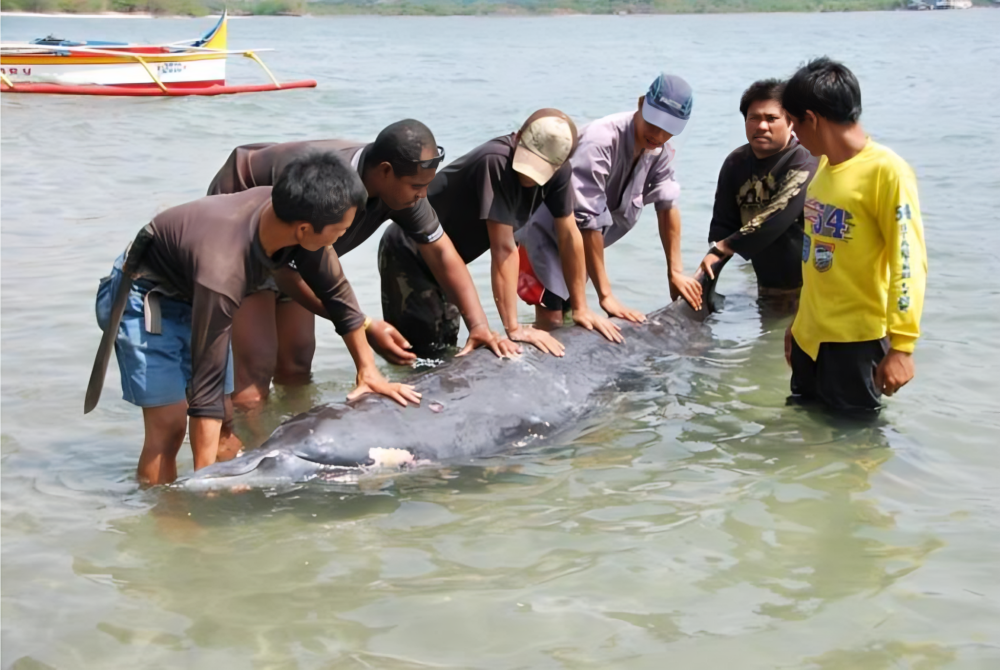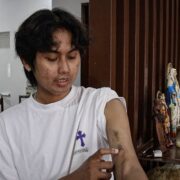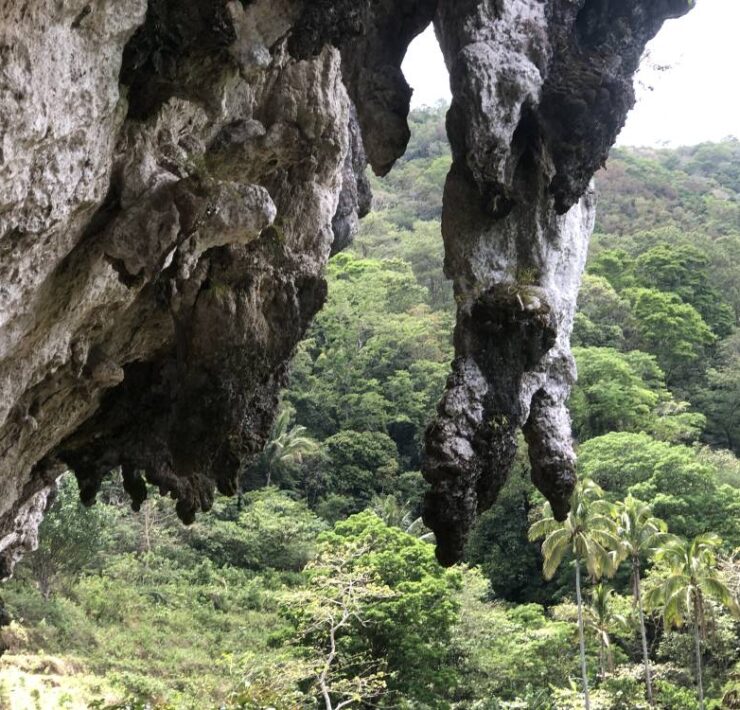Group working to save stranded dolphins and dugongs since ’05

Dr. Lemnuel Aragones left early for Bauan, Batangas, on July 17 after receiving an urgent call from the regional office of the Bureau of Fisheries and Aquatic Resources (BFAR). A dolphin was found on the town’s coast the previous afternoon.
Despite the busy schedule ahead of him that morning at the University of the Philippines Diliman where he teaches environmental science, Aragones drove to the province with his interns. There they found a Risso’s dolphin (Grampus griseus) already thin and debilitated from starvation.
“Zero [food and water] for maybe three to four days,” Aragones told the Inquirer in a call from Bauan that Wednesday. “It was weak.”
The residents tried several times to push it back into the deeper water. But upon Aragones’ advice, the dolphin was fed (mainly with “galunggong” or round scad), given vitamins and placed in a makeshift rehab tank not unlike an inflatable kiddie pool.
“We hope for the best, but the conditions are hard because its area is small,” said Aragones, who is also the president of the Philippine Marine Mammal Stranding Network (PMMSN).
Strandings like this are happening more often, according to a study published last week by Aragones and a team of local and international researchers assembled by the network.
PMMSN is a nonprofit established in 2005, with members coming from the government, the business sector and the academe. It is authorized by the BFAR to collect data on strandings and train communities on the proper handling of beached marine creatures.
No pay, just passion
“We have no paid personnel, just passionate people,” said Aragones, who was actually preparing to deliver a workshop in Bauan scheduled for the next day. “You win some, you lose some. Sometimes it’s frustrating, but it’s a win-win when you see that communities make a realization. We move forward to make sure the winning is more than the losing.”

Using data collected nationwide from 2005 to 2022, the PMMSN study found the annual count of stranded mammals in the country rising from just 23 in 2005 to 107 in 2022.
Logging 1,368 cases in that 18-year span, the researchers were able to identify “hot spot” stranding areas and indexed the marine species that mostly needed rescuing.
Aragones and his team are calling on local government units (LGUs) where these hot spots are located to be more “proactive” and work on curbing disruptive fishing methods, which are a major reason behind the strandings.
PMMSN has listed several hot spots in Region 1 alone: Badoc, Currimao and Pagudpud in Ilocos Norte; Dagupan City; Lingayen, Labrador and Sual in Pangasinan.
Most common victims
Dolphins and dugongs are the two marine mammals most prone to strandings. Among dolphins, two species are commonly reported in the study: the spinner (Stenella longirostris) which figured in 219 cases (including ones where both mother and calf were beached together), and the Risso’s dolphin which was the subject of 95 cases.
Among all things that make them important in the underwater ecosystem, Aragones cited the “underappreciated” role played by dolphins: When hunting for food, they go for sick and old fish, thus leaving mainly the healthy, safe-to-eat population for the fishermen.
The dugongs, on the other hand, are also prone to stranding as they often come across fishing gear deployed near coastlines, in areas where they go to dine on seagrass, according to Aragones.
Healthy ones turning up
Natural factors, like marine mammals contracting disease, may also cause strandings. But in the Philippines a disturbing trend has been observed: more and more of the healthy ones are turning up.
“When marine mammals with good body condition strand, we have to worry,” Aragones said. “Most of those animals shouldn’t have been stranded because they were in good health.”
In the study, 83 percent of the stranded dugongs that eventually died were otherwise healthy before they got precariously close to shore.
Is climate change also driving the numbers up? Aragones isn’t convinced just yet. “Climate variability will always be there. I don’t think that’s a major driver. I think it’s more of the fisheries interaction.”
A 2016 study where Aragones was also took part found that 33 percent of marine mammal strandings from 1998 to 2013 had evidence of direct or indirect human interaction.
This refers to cases of fishing gear entanglement, collisions with sea vessels, or direct capture or attack.
But among these hazards, dynamite fishing is always high on the list.
Dugongs are particularly at risk since they are highly sensitive to the sound of explosives tearing through the shallows and stunning the gentle creatures.
Aragones said further research is needed to understand exactly why these animals get stranded, often dying as they get stuck. “It would be good to let the government know there is a need to investigate,” he said. “We [at PMMSN] have limited funding. We sample a little bit and say … this is what commonly happens. But unless we cover a whole suite of aspects, we can’t be sure.”
*Contacted by the Inquirer on Saturday, Aragones said the condition of the stranded dolphin in Bauan, Batangas, was already “improving”—and that its caretakers had named it “Finny.”
The public may report marine animal strandings to PMMSN through pmmsn.org or its hotline, (47) 252-9000/0928-5018226.





















